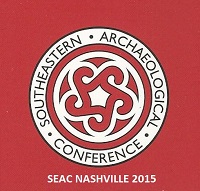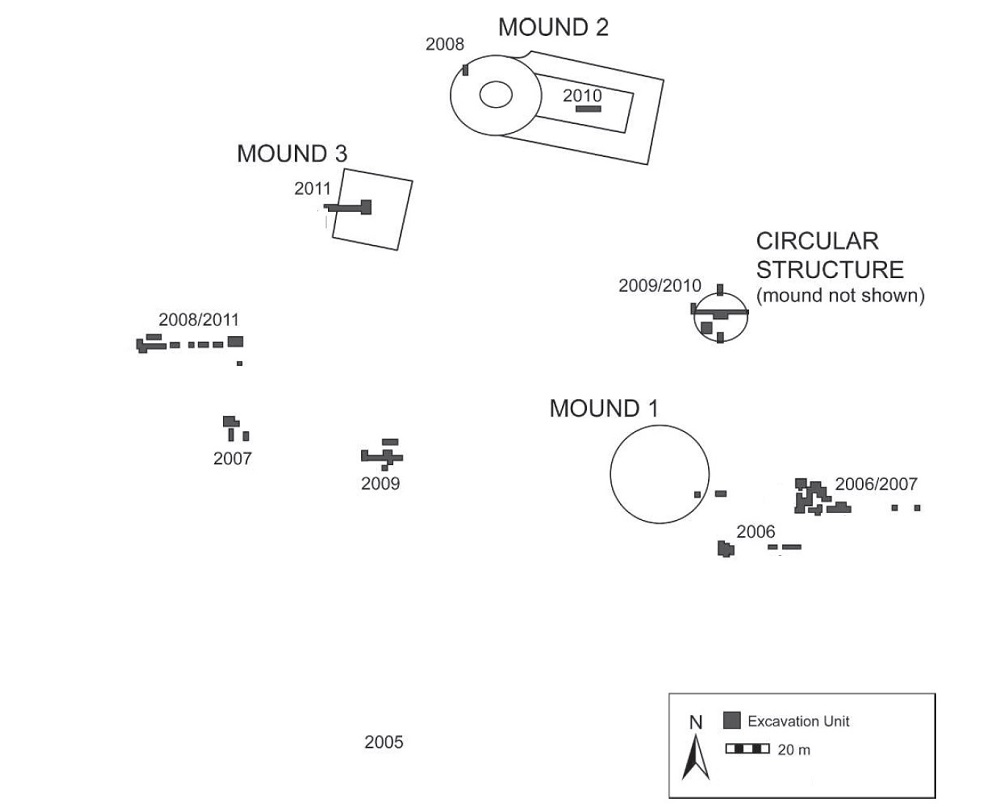
CASTALIAN SPRINGS MOUNDS AND WYNNEWOOD
SEAC Nashville 2015 Excursion Background Information
 | CASTALIAN SPRINGS MOUNDS AND WYNNEWOOD SEAC Nashville 2015 Excursion Background Information |

The historic community of Castalian Springs served as a central place on the Tennessee landscape for at least 12,000 years -- the concentration of mineral springs attracted Pleistocene fauna including mastodons and flat-headed peccaries. The springs also attracted people -- the surrounding countryside has yielded evidence of continuous prehistoric human occupation beginning with Clovis and culminating in construction of the Mississippian center known today as the Castalian Springs Mounds.
Our tour will commence at the Castalian Springs Mounds State Archaeological Area, where Kevin E. Smith (Professor of Anthropology, Middle Tennessee State University) will provide an up-to-date summary of the on-going decade-long archaeological project at the site.

A small Mississippian community was established here about A.D. 1100 -- probably at least in part due to the presence of the rich mineral springs. About A.D. 1300, a flurry of rapid mound construction transformed the former village into one of the largest centers in eastern Middle Tennessee. Less than a century later, the mounds were purposefully capped and the residential areas abandoned. Throughout its history of excavation from 1820 through today, the site has produced some of the most iconic Mississippian objects of the region -- including the widely published "Castalian Springs" or "Myer Gorget."

A few centuries later during the mid-seventeenth century, the springs once again drew hunters and settlers. By 1783, the adjacent Bledsoe's Fort was one of the eight centers of the Cumberland colony that would eventually become Nashville. After visiting the mounds, the tour will reconvene across the road at Wynnewood State Historic Site -- one of the largest surviving nineteenth century log structures in the south. Completed in 1830, the two-story 142-foot-long building was originally designed as a stagecoach inn but soon became one of Middle Tennessee's popular mineral springs resort inns -- renamed the "Castalian Springs" after the healing springs of Castalia at the foot of Mt. Parnassus in Greece.
Struck by one of the area's most devastating tornadoes in 2008, Wynnewood -- designated a National Historic Landmark in 1972 -- became the focus of a four-year multi-million dollar restoration project funded by federal emergency relief funds and the State of Tennessee.


In addition to the fully furnished historic house museum, new exhibits recount the tornado restoration project and the lives of enslaved African-Americans at Wynnewood based on 1975 and 2000 archaeological projects.
Links to background information on the site and environs (links open in a new tab)